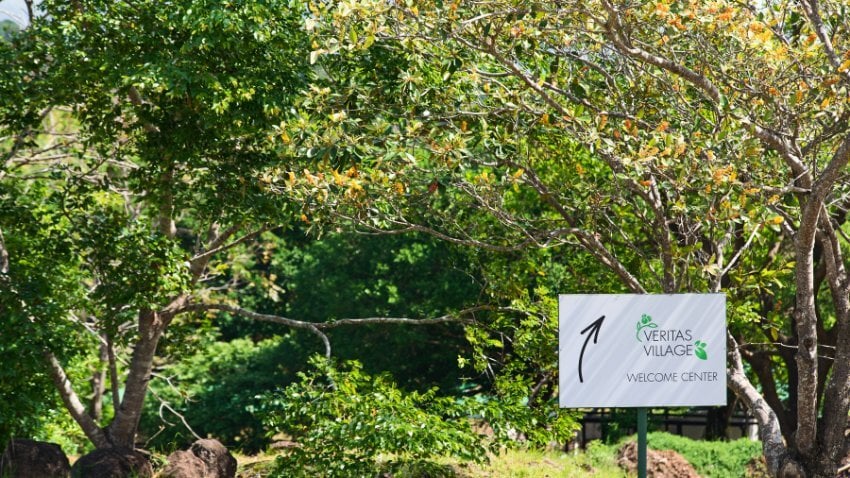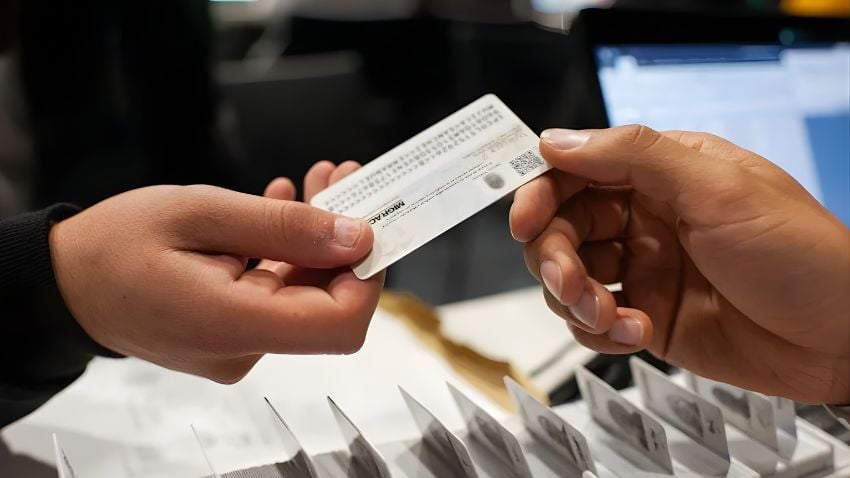Secure Your Offshore Plans Before Nuclear War Begins
What would you do if tensions between world powers escalated to nuclear conflict? With the ongoing crises in the Middle East and Ukraine, many people...
%20To%20Buy%20Land%E2%80%8B.jpg?width=850&height=478&name=Using%20A%20401(K)%20To%20Buy%20Land%E2%80%8B.jpg)
6 min read
What are you doing today to sustain your lifestyle during your golden years? This question may be personal, but did you know that 50% of Americans with decent incomes live paycheck to paycheck? It’s fair to say that most will have a hard time during retirement.
You may realize the importance of investing, growing, and protecting your money. While that’s great, it’s only the first step. Investing is necessary, but how you do so to reap the most significant returns is an entirely different story.
When you plan for retirement, you might consider living in a less expensive place, perhaps even a different country. However, that may not suffice. Similarly, if you have a conventional retirement plan, like an IRA or 401(k), that may not be sufficient, either. The key lies in the assets you choose.
In this article, we’ll examine the potential of investing in land. While it’s not the most common choice, it offers tremendous potential for savvy investors. We’ll also show you how to use your 401(k) to invest in land, boost your wealth, and set yourself up for a more comfortable retirement.

Land is a tangible, stable asset that protects against market volatility, offers passive income opportunities, and diversifies portfolios for long-term security
Investing in land might not be the first thing that comes to mind when planning for retirement; stocks, bonds, and mutual funds are generally portrayed as more secure and profitable in the long run. While investing in these assets is much easier than buying land, there's a catch: they’re intangible and can be highly volatile.
In 2025, markets have remained highly unstable, shaken by policy shocks and political uncertainty. After an 18.9% plunge in the S&P 500 earlier this year, stock prices have rebounded, but not on solid ground. President Trump’s second administration has triggered the most aggressive tariff regime since the Great Depression, imposing, delaying, and reimposing levies on key sectors with little warning.
This unpredictability is wreaking havoc on investor confidence, as markets lurch between optimism and panic. The result? Many portfolios are exposed to sudden, sharp reversals. In contrast, land offers a haven from such policy-driven whiplash. It’s a tangible, finite resource that isn’t subject to the whims of executive orders or international trade spats, making it an increasingly attractive asset for those seeking long-term security.
Unlike stocks and bonds, which often depend on market performance and are at the mercy of market volatility, land offers increased income-generating opportunities. If you own farmland, you may lease it to farmers or agricultural companies or rent it for recreational activities such as hunting, fishing, or camping. Even underdeveloped land may be valuable, as some companies could use it for wind or solar energy projects, creating another source of passive income.
Diversification refers to spreading risk across different asset classes to reduce exposure to any single investment’s poor performance. Adding land to your portfolio may be an excellent way to hedge against the volatility of conventional assets. For example, during market downturns, land value often remains steady or even appreciates, particularly if it has desirable features or is located in a high-demand area. Also, as the value of money decreases, the price of land typically rises, which helps preserve purchasing power.
%20allows%20you%20to%20hold%20assets%20other%20than%20the%20usual%20suspects%E2%80%94stocks%2c%20bonds%2c%20and%20mutual%20funds.jpg?width=750&height=422&name=Only%20then%20can%20you%20ensure%20your%20401(k)%20allows%20you%20to%20hold%20assets%20other%20than%20the%20usual%20suspects%E2%80%94stocks%2c%20bonds%2c%20and%20mutual%20funds.jpg)
401(k) plans offer tax perks and employer matches, but often limit you to stocks and mutual funds. For real diversification, a Self-Directed IRA may unlock access to alternative assets
Now that we’ve looked at the benefits of land as an asset, it’s crucial to understand how 401(k) plans work. Only then you can ensure your 401(k) allows you to hold assets other than the usual suspects—stocks, bonds, and mutual funds.
When you start a new job, your employer typically offers you a 401(k). These retirement plans have significant benefits, such as matching contributions and tax deductions. You can choose between a traditional 401(k), which allows you to reduce your taxable income during your working years, and a Roth 401(k), which requires contributions with after-tax dollars but offers tax-free withdrawals during retirement.
As they say, not everything that shines is made of gold, and 401(k) plans are no exception. While you may get tax benefits and your employer uses their money to invest in your retirement, what assets are you investing in? Generally, you’re offered a series of ETFs (Exchange-Traded Funds) or mutual funds, and in some cases, you can decide what percentage of your wages to invest in each of them. The problem is that these assets are not as profitable as they seem. Stocks fluctuate and may not offer the returns you want.
Another major disadvantage of these plans is that it’s often difficult to invest in alternative assets. Most employers’ 401(k) plans do not allow you to use your money to invest in whatever you want. You may get to choose certain ETFs and enjoy a certain degree of diversification, but the reality is that your money is invested, for the most part, in intangible assets.
Before we start exploring how to use your 401(k) to invest in land, please keep in mind that the best route for most individuals will be to roll over their 401(k) into a Self-Directed IRA (SDIRA). This option provides you with greater flexibility to invest in land and other alternative assets with the same tax advantages you are used to. If you want to set up an SDIRA, contact our trusted partner, who can help guide you through this process. If you are self-employed and have a business, a Solo 401(k) might also be an option, but for most readers, the SDIRA will be the more practical and accessible choice.
A Solo 401(k) is the only 401(k) plan that supports offshore investments. Even better, you can roll your Solo 401(k) into a Self-Directed IRA (SDIRA) if you want even more flexibility. Why consider this move? Rolling it into an SDIRA gives you access to a broader range of offshore investment options and specialized custodians who focus on managing these types of assets. However, in some cases, you may have the right to roll over your 401(k) into an SDIRA. Let’s explore these options in brief:
Left Your Employer? - If you've retired, quit, or been let go, you can usually roll over your traditional 401(k) into an SDIRA. This is the most common rollover scenario.
Here's something to consider: many people forget about their old 401(k)s when changing jobs. If this applies to you, it’s time to track down those old accounts. Otherwise, those funds could be sitting idle instead of being used for investments such as offshore land.
In-Service Rollovers - Did you know you can roll over your 401(k) while still working? Some plans allow in-service rollovers for employees aged 55–60, depending on the plan's terms. If this applies, you can move your funds into an SDIRA without leaving your job. Just check with your plan administrator to confirm if this option is available.
Rolled-In Funds - If you previously rolled over funds from an old 401(k) into your current employer's plan, you can often roll those funds back into an SDIRA. It's worth looking into.
Surviving Spouses - If you're a surviving spouse of a deceased 401(k) participant, you can roll the account into your retirement account or an SDIRA. This allows you to manage the funds while keeping the tax advantages of a retirement account intact.
You may already have a 401(k), but the assets you are investing in might not be to your liking. The last thing you want during your golden years is to be unsure of your net worth, so it’s better to take control of your retirement now rather than later.
First, do your due diligence and find a provider specializing in self-directed plans. These plans give you more investment options and control over your retirement funds. Instead of being limited to American stocks and bonds, as many conventional 401(k) plans are, you can use your funds to invest in other assets like land.
For most individuals, the best option is to roll over their 401(k) into a Self-Directed IRA (SDIRA). While a Solo 401(k) may be an option for business owners, an SDIRA is generally more accessible and straightforward for most people.
After your Self-Directed IRA (SDIRA) is set up, you can fund it through rollovers or contributions, ensuring the process is completed correctly to avoid taxes or penalties. To invest in land, creating a Limited Liability Company (LLC) owned by your SDIRA provides an IRS-compliant legal structure for managing your investment. Since some countries don’t recognize American retirement accounts as legal owners, setting up an LLC for offshore investment might be the best option. A Solo 401(k) may also use a similar structure if you are self-employed.

Unlike volatile market assets, land is tangible and resilient, offering stability, passive income, and a hedge against inflation—making it a powerful tool for long-term retirement security
While conventional 401(k) plans can be beneficial, they often limit you to volatile, market-based assets and restrict your ability to invest in more stable alternatives. Land, in particular, offers unique advantages as a retirement asset. It’s tangible, finite, and historically resilient in times of economic uncertainty, providing a hedge against inflation and protection from stock market volatility.
As a real, physical asset, land delivers a level of security that stocks and bonds simply cannot. It can generate passive income through leases or rentals, and its versatility allows for multiple uses depending on location and zoning. These characteristics make land an appealing option for long-term wealth preservation and income generation.
Before investing in land with your retirement funds, it’s essential to evaluate your situation and understand the structure that best fits your needs. For many, rolling over into a Self-Directed IRA (SDIRA) is the most effective way to gain control and flexibility. For business owners or self-employed individuals, a Solo 401(k) might offer even more autonomy and advantages.
With careful planning and the right investment vehicle, adding land to your retirement portfolio can help you build lasting security, stable income, and a diversified foundation for your financial future.
If you want the best intel from the expat world, including profitable offshore opportunities, little-known tax-saving strategies, and hard-won insights on immigration, passports, and Plan-B residencies, all delivered to your inbox every single week, then join our daily correspondence, EMS Pulse®. Currently enjoyed by over 84,000 expats and expat-hopefuls worldwide. Fill in the form below to join our newsletter free:

Written by Mikkel Thorup
Mikkel Thorup is the world’s most sought-after expat consultant. He focuses on helping high-net-worth private clients to legally mitigate tax liabilities, obtain a second residency and citizenship, and assemble a portfolio of foreign investments including international real estate, timber plantations, agricultural land and other hard-money tangible assets. Mikkel is the Founder and CEO at Expat Money®, a private consulting firm started in 2017. He hosts the popular weekly podcast, the Expat Money Show, and wrote the definitive #1-Best Selling book Expat Secrets - How To Pay Zero Taxes, Live Overseas And Make Giant Piles Of Money, and his second book: Expats Guide On Moving To Mexico.

What would you do if tensions between world powers escalated to nuclear conflict? With the ongoing crises in the Middle East and Ukraine, many people...

Every year brings new lessons, opportunities, and milestones worth revisiting. As 2025 comes to a close, we’re taking a moment to reflect on the...

Latin America has become one of the most straightforward regions in the world for securing residency. Most countries in the region offer simple,...